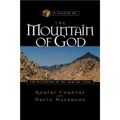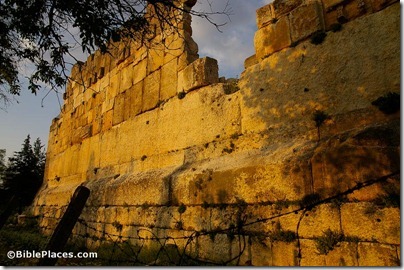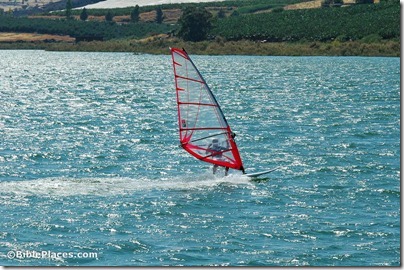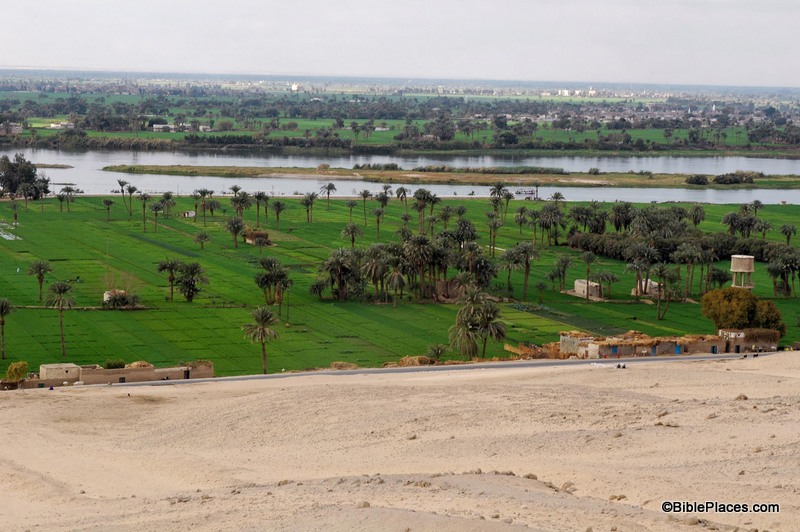Two Neolithic figurines were discovered at Moza (biblical Emmaus?) along the Jerusalem-Tel Aviv highway. High-res photos from the IAA are available. Two men were arrested for trying to steal bones from excavations in Beth Shemesh. The Israeli government has appealed the verdict in the case of the Jehoash Inscription, but the rationale for doing so is unclear. Shmuel Browns suggests a 10-day itinerary that will take you to many places you won’t see on a typical Christian tour. Stephen Gabriel Rosenberg provides a review of the archaeological stories in July. Aaron’s tomb near Petra is a “quiet, austere holy site.” There is a lot to see in the Kidron Valley of Jerusalem. Accordance 10 has some nice new features for photographs and maps. Now shipping: Alexander to Constantine: Archaeology of the Land of the Bible, by Eric M. Meyers and Mark A. Chancey. HT: Charles Savelle  Neolithic figurine from Moza. Photo by Yael Yolovitch, courtesy of the Israel Antiquities Authority.
Neolithic figurine from Moza. Photo by Yael Yolovitch, courtesy of the Israel Antiquities Authority.
In an interview posted this morning on Justin Taylor’s blog, Leen Ritmeyer describes the “Palatial Mansion” that overlooked the Temple Mount in the first-century. This impressive structure inside today’s Wohl Museum is frequently skipped by tourists to Jerusalem, if I can judge by the private visits my groups usually enjoy at the site. Many who have been to Jerusalem may thus “see” this ancient home through the Leen Ritmeyer’s eyes, as the supervisor of the reconstruction effort provides a helpful “walk-through.” The house also provides the opportunity to clarify a difficult portion of the New Testament. How could Peter be warming himself by a fire in the courtyard on the night he denied Jesus, and yet be able to “go outside” the house of the high priest (Luke 22:54-62)? Ritmeyer explains and illustrates the concept of an open courtyard inside the palace. While I appreciate the way that Ritmeyer makes these discoveries so accessible to the average Bible reader, I am less optimistic that this particular house is the very house where Jesus stood on trial and Peter denied the Lord. In favor of making this positive identification is the fact that this is the largest house known from this time period in Jerusalem. On the other hand, most of the land in the Old City has never been excavated. If there were 100 houses in Jerusalem in the first century, how likely is it that the only complete one excavated is the same one mentioned in the Bible? See the post for the full interview, some of Ritmeyer’s famous diagrams, and links to his excellent resources. A commenter to the post also shares 63 high-resolution photos he took on a visit. These are particularly valuable because photography is not allowed unless you pay a lot of money.
- Tagged Jerusalem
I appreciate the careful work that Gordon Franz has done over the past several decades in exposing shoddy scholarship by those who make sensational claims in support of the Bible’s accuracy. Ron  Wyatt was the long-time leader of fraudulent archaeology until his death in 1999. One of those who picked up the baton was Robert Cornuke, a one-time policeman who now alleges to have discovered the location of Mount Sinai, the ark of the covenant, Noah’s ark, and Paul’s shipwrecked vessel on Malta. Indeed, he discovers more on a two-week summer trip than any trained archaeologist discovers in a lifetime! What accounts for his popularity among evangelical Christians? Two things: he tells them what they want to hear in the way they want to hear it. Bible believers want to hear of great discoveries that support their faith, and if you package that in a charismatic presentation or a well-written paperback, you need not bother yourself with truth.
Wyatt was the long-time leader of fraudulent archaeology until his death in 1999. One of those who picked up the baton was Robert Cornuke, a one-time policeman who now alleges to have discovered the location of Mount Sinai, the ark of the covenant, Noah’s ark, and Paul’s shipwrecked vessel on Malta. Indeed, he discovers more on a two-week summer trip than any trained archaeologist discovers in a lifetime! What accounts for his popularity among evangelical Christians? Two things: he tells them what they want to hear in the way they want to hear it. Bible believers want to hear of great discoveries that support their faith, and if you package that in a charismatic presentation or a well-written paperback, you need not bother yourself with truth.  Gordon Franz is serving the church by investigating Cornuke’s claims and writing critiques to help believers navigate these waters. Franz has recently created a convenient entry point for the articles he has written on Cornuke’s work over the years. Some of those articles include: Mount Sinai is NOT at Jebel al-Lawz in Saudi Arabia Part 1 Yahweh Inscription Discovered at Mount Sinai!
Gordon Franz is serving the church by investigating Cornuke’s claims and writing critiques to help believers navigate these waters. Franz has recently created a convenient entry point for the articles he has written on Cornuke’s work over the years. Some of those articles include: Mount Sinai is NOT at Jebel al-Lawz in Saudi Arabia Part 1 Yahweh Inscription Discovered at Mount Sinai! Does “The Lost Shipwreck of Paul” Hold Water? Was the Ark of the Covenant Taken to Ethiopia? The full list is here. You may want to bookmark this link for future reference. For critiques of other dubious “archaeology,” see Franz’s “Cracked Pot Archaeology” section.
Does “The Lost Shipwreck of Paul” Hold Water? Was the Ark of the Covenant Taken to Ethiopia? The full list is here. You may want to bookmark this link for future reference. For critiques of other dubious “archaeology,” see Franz’s “Cracked Pot Archaeology” section.
- Tagged Analysis, Pseudo-Archaeology
The Macherus article in the newest issue of Biblical Archaeology Review is quite good, especially with its reconstruction diagrams. A particularly impressive photo is the panoramic shot from Macherus showing Masada, Herodium, and Jerusalem. I was surprised to see the entire article available online this morning. If you don’t subscribe to the print edition, you have a brief chance to read it before it goes behind the subscription wall. An annual digital subscription to BAR is now available for $20. A 21-m-long sediment sample near the Dead Sea is providing scientists with information about the area’s climate in history. According to Thomas Litt, the results “clearly show how surprisingly fast lush Mediterranean sclerophyll vegetation can morph into steppe or even desert vegetation within a few decades if it becomes drier.” The level of the Sea of Galilee dropped more than two feet this summer. Carl Rasmussen has just added photos to his site of a place in Galilee I have not seen: Domus Galilaeae is a Roman Catholic retreat center overlooking the northern side of the Sea of Galilee. And his latest travel tip suggests an alternative viewpoint now that Arbel is controlled by Park Rangers and closes way too early. Wednesday marked the 200th anniversary of John Lewis Burckhardt’s visit to Petra. He was 27 when he re-discovered the Nabatean city for the western world on August 22, 1812. Gus W. Van Beek died this week. He was Curator of Old World Archaeology in the National Museum of Natural History, Smithsonian Institution and recent author of Glorious Mud! How in the world did the ancients ever move massive stones such as the trilithons in the Jupiter Temple of Baalbek that weigh more than 1,000 tons? Paleobabble answers that question with diagrams and translation from an older French article.  Trilithon in Jupiter Temple, Baalbek (photo from the Lebanon volume of the Pictorial Library of Bible Lands)
Trilithon in Jupiter Temple, Baalbek (photo from the Lebanon volume of the Pictorial Library of Bible Lands)
- Tagged Dead Sea, Galilee, Jordan, Lebanon, Technology, Weekend Roundup
(Post by Seth M. Rodriquez)
As I’ve pointed out before in this series, pictures can be powerful tools in the hands of the Bible teacher. The right picture can illuminate a passage and bring deeper understanding. This week’s photo is another example. It comes from Volume 7 of the revised and expanded edition of the Pictorial Library of Bible Lands, which focuses on Egypt. The photo is entitled “Nile River Valley Near Beni Hasan Tombs from East” (photo ID #: tb010805121).
When the Israelites were about to enter the Promised Land, Moses contrasted the land of Egypt with the land of Canaan:
For the land, into which you are entering to possess it, is not like the land of Egypt from which you came, where you used to sow your seed and water it with your foot like a vegetable garden. But the land into which you are about to cross to possess it, a land of hills and valleys, drinks water from the rain of heaven, a land for which the Lord your God cares; the eyes of the Lord your God are always on it, from the beginning even to the end of the year. (Deut. 11:10-12, NASB)
In the context of the chapter, Moses is warning the people to obey God’s commandments so that they will prosper in the land. He explains that life in the Promised Land will be very different than it was in Egypt, and this week’s photo helps explain why.
The agriculture of Egypt is based on the water from the Nile. Farmers plant their crops in the flat land around the Nile, in part, because they have easy access to water from there. The phrase in verse 10 “sow your seed and water it with your foot” has produced a number of interpretations, such as carrying the water by foot in buckets, digging channels with one’s feet, and using a mechanical device that is powered by foot. Whatever the correct interpretation, the point is that in Egypt it was possible to provide water for your crops by mere manpower. In this week’s photo, you can see the relationship between the farmland and the Nile, and it is clear from this picture that it would be a relatively easy task to get water from the Nile to the crops growing nearby.
By contrast, the agriculture of Canaan is vastly different. There is no convenient and reliable natural source of water for the farmer’s crops. In contrast to the flat farmlands that surround the Nile, Canaan is “a land of hills and valleys,” which makes moving water from one place to another difficult. And the only major river that flows through the land, the Jordan, is below sea level for most of its course and is basically useless for irrigation. Before the advent of modern machinery, the only way the fields could be watered was by rain.
He will shut up the heavens so that there will be no rain and the ground will not yield its fruit; and you will perish quickly from the good land which the Lord is giving you. (Deut. 11:17, NASB)
The land to which God was leading His people was a land that required them to walk by faith and depend on Him.
- Tagged Egypt, Picture of the Week
Free on Kindle today: The Apostle: The Life of Paul, by John Pollock. The ASOR Blog has posted the latest Archaeology Roundup. Three new volumes of the City of David final excavation reports have been published. If you have not had the chance to visit Hebron, you should take the illustrated tour today with Wayne Stiles. (Another version with smaller images is published at the Jerusalem Post.) Is skinny-dipping in the Sea of Galilee sacrilegious? The Washington Post gives my answer to the question. WiFi access is important enough to visitors in Israel that one biblical village has equipped their donkeys with WiFi routers. HT: Charles Savelle  Windsurfer on Sea of Galilee (photo source)
Windsurfer on Sea of Galilee (photo source)
- Tagged Galilee, Jerusalem, Resources, Technology, Weekend Roundup
The BiblePlaces Blog provides updates and analysis of the latest in biblical archaeology, history, and geography. Unless otherwise noted, the posts are written by Todd Bolen, PhD, Professor of Biblical Studies at The Master’s University.
As an Amazon Associate we earn from qualifying purchases. In any case, we will provide honest advice.
